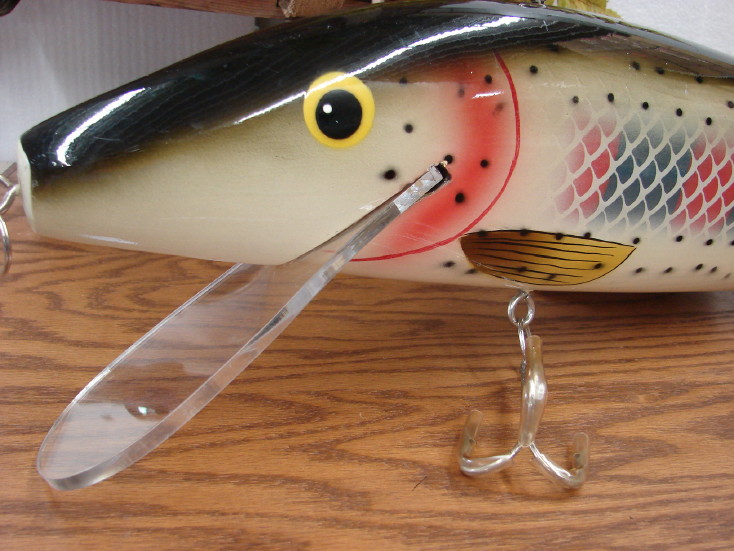Welcome to the fascinating world of large decorative fishing lures! Whether you’re an avid angler, a collector, or simply someone who appreciates the artistry involved in lure-making, you’re in for a treat. Throughout this guide, we’ll dive deep into the types of large decorative lures, their history, uses, and everything in between, blending personal anecdotes with expert insights. So, grab your favorite beverage, get comfortable, and let’s reel in some knowledge!
What Are Large Decorative Fishing Lures?
Large decorative fishing lures are not just tools for catching fish; they are also beautiful pieces of art. Crafted from various materials, these lures come in an array of shapes, colors, and designs. While some are designed for practical use during fishing, others serve purely aesthetic purposes, often showcased in homes, offices, or galleries.
The Rise of Decorative Lures in Popular Culture
In recent years, decorative lures have gained popularity not only among fishing enthusiasts but also as collectibles. Many artists and craftsmen have turned their attention to creating unique, handcrafted lures that reflect personal styles or themes. As someone who has dabbled in both fishing and collecting, I can attest that each lure tells a story, whether it’s the thrill of the catch or the craftsmanship behind each design.
Types of Large Decorative Fishing Lures
1. Classic Wooden Lures
Wooden lures have been around since the early days of fishing. They are often hand-painted and carved, which gives each piece a unique charm.

Pros and Cons of Wooden Lures
| Pros | Cons |
|---|---|
| Durable and long-lasting | Can be heavier than other materials |
| Unique craftsmanship and design | More susceptible to water damage if not sealed properly |
2. Plastic Lures
Plastic lures are a popular choice due to their versatility in design and color. These lures can mimic various sea creatures, making them effective for fishing.

Pros and Cons of Plastic Lures
| Pros | Cons |
|---|---|
| Lightweight and easy to cast | Less eco-friendly compared to wood |
| Available in numerous colors and designs | Can lose paint quickly |
3. Metal Lures
Metal lures, often used in deep-sea fishing, can be very eye-catching. Their reflective surfaces attract fish effectively and can be highly decorative.

Pros and Cons of Metal Lures
| Pros | Cons |
|---|---|
| Durable and corrosion-resistant | Can be too heavy for some types of fishing |
| Effective in various water conditions | Limited design options compared to wood |
Collecting Large Decorative Fishing Lures
Collecting lures can be a rewarding hobby. Here are some tips to get you started:

Start with Research
Understanding the history and craftsmanship behind lures is crucial. Research well-known lure manufacturers and popular collectible lures.
Join Online Communities
Joining forums or social media groups dedicated to fishing and lure collecting can provide invaluable tips and resources. Sharing your collection with others can also be a fun way to engage with the community.

Attend Fishing Expos and Shows
Fishing expos are great places to find unique lures. You can meet artisans, learn about their craft, and even purchase one-of-a-kind pieces!
Comparison Table: Best Large Decorative Fishing Lures
| Lure Type | Material | Best For | Price Range |
|---|---|---|---|
| Classic Wooden Lure | Wood | Collectors, Traditional Fishing | $15 – $50 |
| Plastic Lure | Plastic | Freshwater Fishing, Kids | $5 – $30 |
| Metal Lure | Metal | Deep-Sea Fishing | $10 – $40 |

Personal Experience with Lures
As a lifelong angler, I can remember the first time I saw a large decorative lure hanging in a local bait shop. It was a beautifully crafted wooden lure painted with vibrant colors. I felt compelled to purchase it, not just as a fishing tool but as a piece of art that reminded me of my love for the sport. Over the years, I’ve added lures from different craftsmen to my collection, each with its own story and charm.
Using Decorative Lures for Fishing
While many choose to keep decorative lures on display, using them for fishing can be incredibly rewarding. Here are a few tips:
Choose the Right Environment
Some lures are more effective in freshwater, while others are designed for saltwater. Understanding where you’ll be fishing can help you select the right lure.
Match the Hatch
Fish are often attracted to lures that resemble their natural prey. Research what fish are in the area and what they typically feed on.
FAQs About Large Decorative Fishing Lures
1. Are decorative lures safe to use while fishing?
Yes, decorative lures can be used while fishing. However, ensure they are made of durable materials and are specifically designed for fishing to prevent damage during use.
2. How can I clean and maintain my decorative lures?
To clean your lures, use mild soap and water. Avoid harsh chemicals that could damage the paint or material. Ensure they are dried thoroughly before storage.
3. What is the best way to display my decorative lures?
Consider using shadow boxes or display cases to showcase your lures. Ensure they are placed away from direct sunlight to prevent fading.
4. Can I make my own decorative lures?
Absolutely! Many artisans enjoy creating custom lures. Start with a basic mold and materials like wood, resin, or even recycled plastics for a personal touch.
Conclusion: The Art of Large Decorative Fishing Lures
Large decorative fishing lures are a beautiful blend of functionality and art. Whether you’re a fisherman looking to enhance your catch or a collector seeking unique pieces for display, these lures offer something for everyone. My own journey with decorative lures has been nothing short of fulfilling, and I hope this guide inspires you to explore this captivating world further. Happy fishing and collecting!